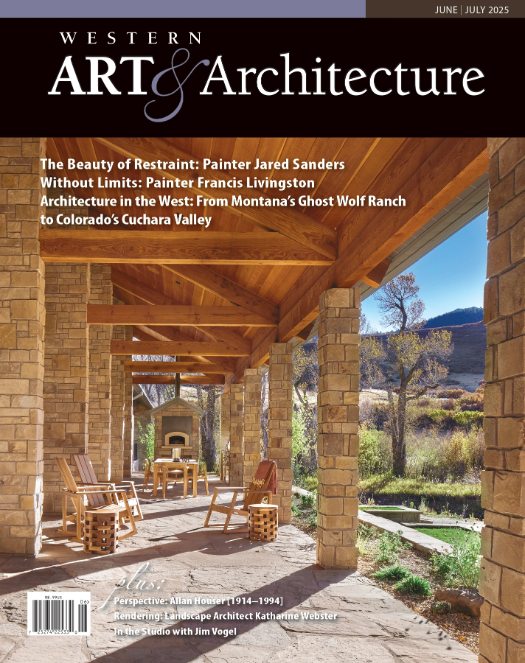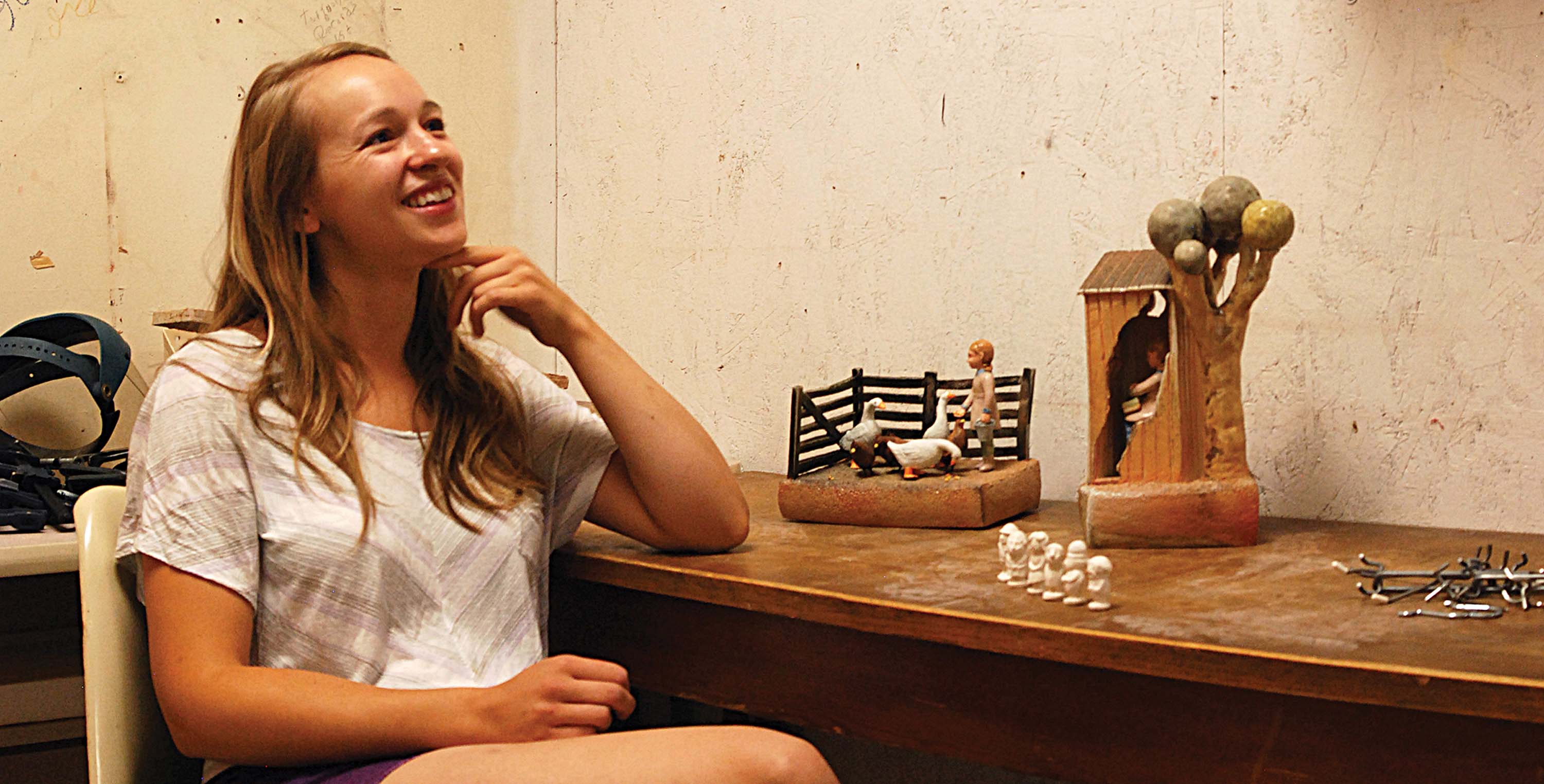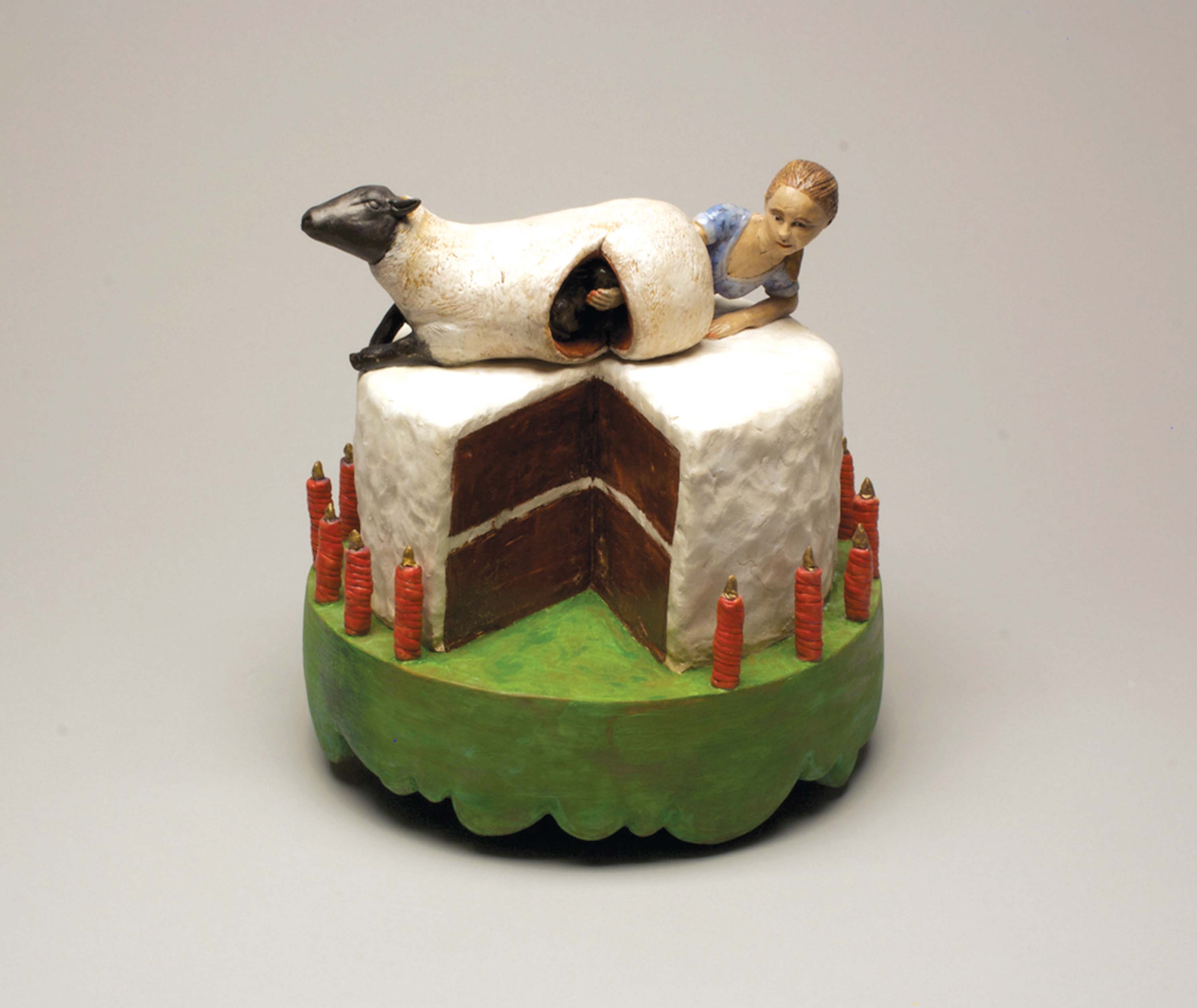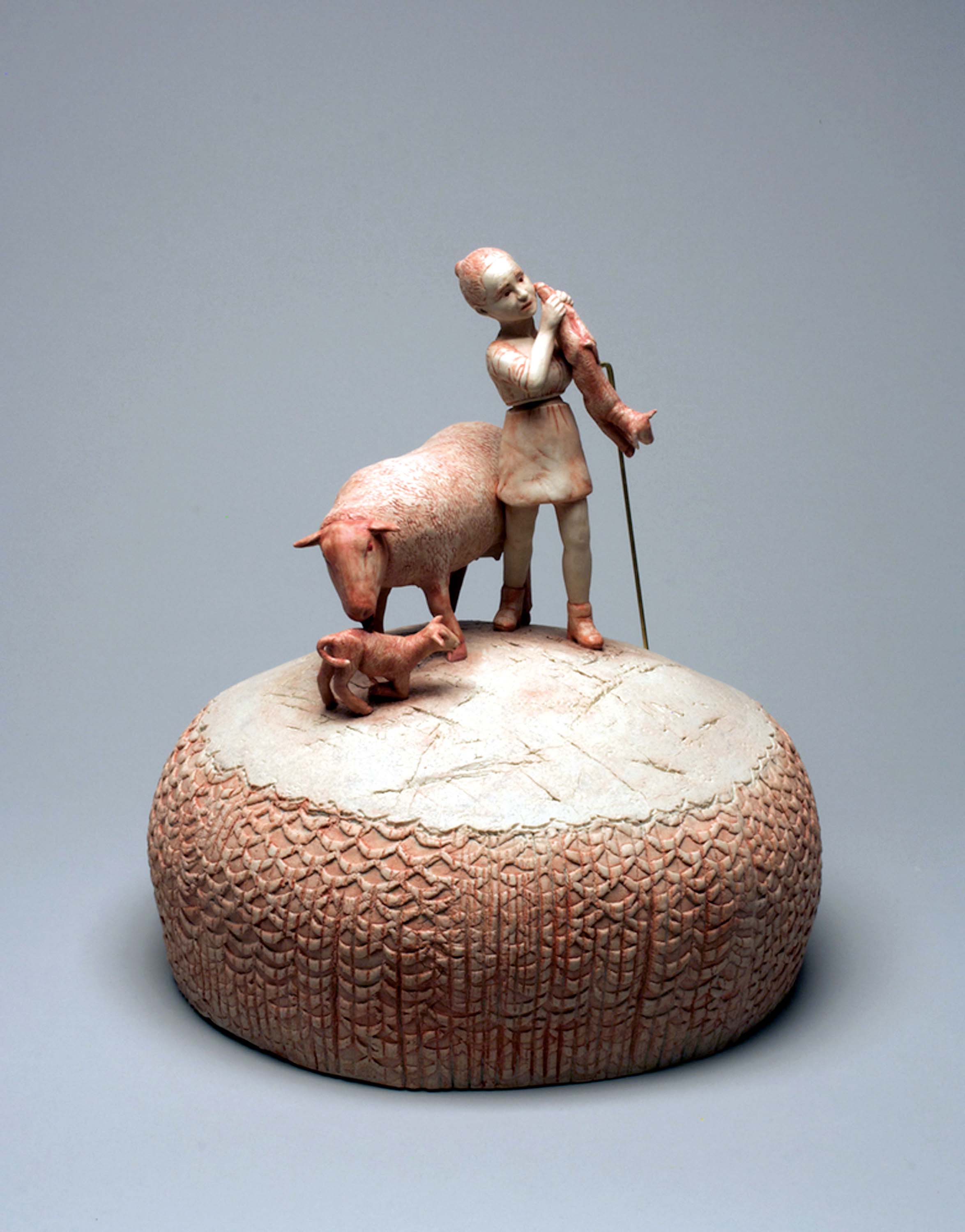
19 Oct Ones to Watch: Artist Crista Ann Ames
Crista Ann Ames’ ceramic art centers on the narrative by means of figurines. Her work is both personal and universal, due to her use of specific objects we recognize at once: a patient’s gown, a birthday cake, a forested landscape. All of these bring to mind stories we’ve heard, whether from friends, parents or in fairy tales.
“Storytelling has shaped humans and society since before recorded history,” Ames says. “[Stories] are passed from one generation to the next. Stories have been used to define society’s morals and prejudices as well as our humanity.”
“Working with these figureshas changed my perspective of how I look at the world, how I think about the body, even my own body. It’s the thing we can all relate to as human beings.”
While visiting London’s Victoria and Albert Museum, Ames was struck by the Staffordshire figurines dating back to the 1800s. These figurines often told popular stories in gruesomely bright colors and were sold in marketplaces to people who were illiterate, a treasure for the commonest of folk.
“I’m a common person and I wanted to make figurines for people like me,” Ames says. “So I depict stories from my family and from the farm where I grew up in Washington. The piece, My Super Sweet Sixteen came from the time I delivered a lamb on my 16th birthday.”
Even more personal, Ames became an egg donor for her sister. The experience affected her deeply. “I was treated like breeding stock,” she says. “So I’ve been incorporating sewn hospital gowns with
the figures in my work.”
Adding to her narrative, Ames has been experimenting with different firings and glazes in a single piece. For example, in one piece she used wood fire for a boat, celadon for the waves and the figure itself was salt fired.
“As humans we try so hard to be different than the world we live in,” she says. “I try to differentiate the figures in my work by firing them in different kilns.”
And so it comes back to the figure as a way of understanding the human condition, a way to see ourselves as we participate in our daily lives.
“Clay emphasizes the fragility of life,” Ames says. “Working with these figures has changed my perspective of how I look at the world, how I think about the body, even my own body. It’s the thing we can all relate to as human beings. And there’s something magical about creating a tiny person with tiny hands.”
Ames is represented by Turman Larison Contemporary in Helena, Montana, and the Bank Left Gallery in Palouse, Washington.
- Crista Ann Ames
- “My Super Sweet Sixteen” | Porcelain | 14 x 11 x 11 inches | 2012
- “Breech” | Porcelain and Brass | 16 x 12 x 12 inches | 2012









No Comments